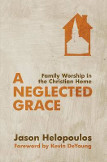
O Sacred Head, Now Wounded
“They don’t write songs like that anymore.” It is not uncommon to hear an elderly man or woman utter these words whenever he or she thinks back on the “good ol’ days” of music. In a sense, this phrase is every bit as applicable in the church as it in the secular world of music. While many have written beautiful worship music in our day, we continue to need older hymns to help round out our worship experience. Fewer Christian songs are as “out of date” as Bernard of Clairvaux’s “O Sacred Head Now Wounded.” Perhaps that’s why we need it now more than ever.
Authorship of this hymn has historically been ascribed to Bernard--though the question of authorship may never be conclusively settled. Who was Bernard? Bernard was born in Burgundy, France in 1090. His early devotion to literature later bore fruit in his powerful preaching and writing. When he was twenty-five he helped found a monastery which he named Claire Vallée, which evolved into Clairvaux from which his name comes. Here he kept a strict regimen of physical and spiritual discipline, though, unlike many monks of his day, Bernard was very much involved in churchly activities. After a rigorous and tumultuous life, he died at Clairvaux in 1153.
Many modern evangelicals would disagree with a number of Bernard’s teachings (such as his excessive emphasis on Mary and her supposed role as co-mediatrix, as well as the view that the Christian life is best lived in a monastery). Still, there is much we can appreciate in Bernard. John Calvin, a fellow-Frenchman living 400 years later, had a deep and growing appreciation for Bernard, citing him forty-one times from 1539-1559.
Bernard was captivated by Christ. He rested in his finished work and found deep comfort in union with his Savior. For Bernard the righteousness that justifies a person is God’s gift received by faith alone.1 Bernard also helped promote a more experiential expression of Christianity which had become formalized in certain medieval traditions. He advocated the discipline of lectio divina, in which Scripture is treated as a means of communion with God through reading, meditation, prayer and contemplation. Bernard was a sort of proto-Puritan who lived by the maxim, “I believe that I may experience."2 “O Sacred Head Now Wounded” is a vivid expression of his experiential Christianity.
This hymn, based on a long poem entitled “Hail Savior of the World,” contains stanzas addressing the various parts of Christ’s body hanging on the cross. The last part of the poem is addressed to Christ’s head; it begins with the Latin for “Hail bloody head.” The stanzas that appear in many contemporary hymnals come to us by way of the translation of J.W. Alexander (1830) and confront us with three important facets of Christ’s suffering: the graphic nature of it, the grace that flows from it and the gratitude with which we are to respond when we embrace it.
Graphic Suffering
The author helps us to look Christ in the face, as it were, and watch him bleed and die for our sins. Too often Protestants focus on the theological importance of Christ’s suffering while glossing over the physical reality. This song exalts three concepts of Christ’s graphic suffering. First, Bernard writes of Christ’s grief, his keen mental distress evoked by his affliction. The night before Jesus told his disciples, “My soul is exceedingly sorrowful, even to death” (Mark 14:34). How much had that sorrow swelled at Calvary! As the time of his death drew near Christ felt the grief of forsakenness (Mark. 15:34). The Father’s perfect love seemed to vanish right when Christ needed it most.
Second, the author also reminds us of Christ’s shame. The Son of God, whose head the bore the crown of thorns, had lowered himself from a prior glory. “O Sacred Head, what glory, what bliss till now was Thine... O noblest Brow and dearest, in other days the world all feared when Thou appearedst.” Now, Christ is buried beneath the unrelenting waves of public nakedness, punishment, and humiliation.
Third, Bernard helps us to feel Christ’s pain. The soldiers have struck Jesus (John 19:3), pressed a crown of thorns on his head (v. 5), scourged him with whips (Matt. 27:26), and drove nails through his feet and hands (John 20:25). On the cross he hung from nails, writhing in pain until he suffocated. Christ’s graphic suffering does not tell the whole story of the atonement, but it is part of the story.
Gracious Suffering
Bernard does not interpret Christ’s suffering merely as an example of loving sacrifice. Rather, Christ died in the place of elect sinners. Theologians call this “Vicarious Atonement” or “Penal Substitution.” The child of God says with the author, “Mine, mine was the transgression but Thine the deadly pain. Lo, here I fall my Savior, ‘Tis I deserve thy place;” The cross is a symbol of God’s hatred of sin, hatred under which we deserve to die. But Christ’s pain was for our gain: “What Thou, my Lord, has suffered was all for sinners gain.” Christ endured the cross to remove our curse (Gal. 3:10-13) and show us his amazing grace.
Gratitude-Inducing Suffering
The author can find no words to describe the profound gratitude he experiences as he looks upon the bloody face of his suffering High Priest. Yet, he ponders how he can best thank his “dearest friend.” The writer picks up on the precious words Christ spoke to his disciples, “Greater love has no one than this, than to lay down one’s life for his friends” (John 15:13). In Christ’s death the restored friendship between God and believers is sealed with holy blood. The author realizes that it is not words but deeds that will show his gratitude and express his friendship (John 15:14). He pleads for divine help in living a life of true love and devotion to his Savior.
Bernard of Clairvaux's solemn hymn, "O Sacred Head Now Wounded," helps us better understand that the Gospel is grounded in Christ’s sacrifice not in our faithfulness. It also helps us affirm that those who are restored to God through Christ’s sacrifice enter a new friendship with God. These themes are not restricted to medieval hymns. But the beauty with which Bernard presents these themes is, needless to say, hard to match.
William Boekestein pastors Immanuel Fellowship Church in Kalamazoo, Michigan. His most recent books are Bible Studies on Mark (Reformed Fellowship, Inc. 2016), and Shepherd Warrior (Christian Focus, 2016).
1. See John Calvin’s Institutes 3.11.22
2. Stephen Nichols Bernard of Clairvaux and Mysticism (Tabletalk Magazine, September 2012)
Christward Collective is a conversation of the Alliance of Confessing Evangelicals. It is supported only by its readers and gracious Christians like you. Please prayerfully consider supporting Christward Collective and the mission of the Alliance.



















 © Alliance of Confessing Evangelicals
© Alliance of Confessing Evangelicals


